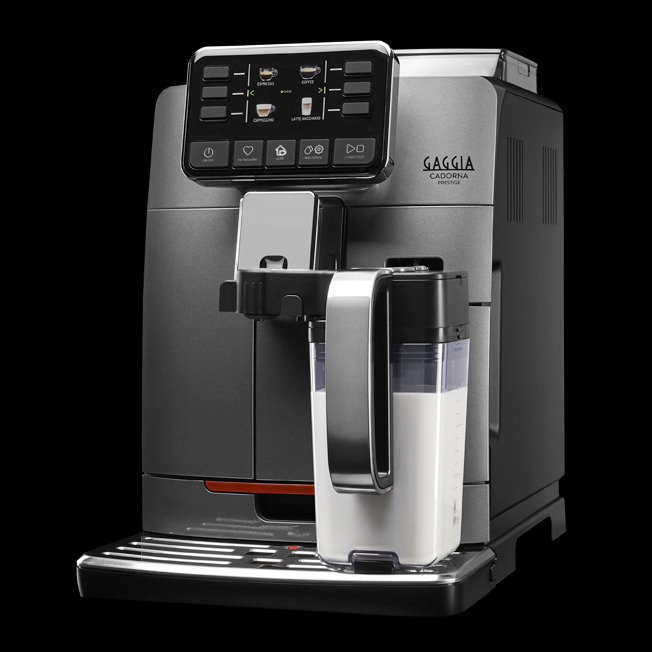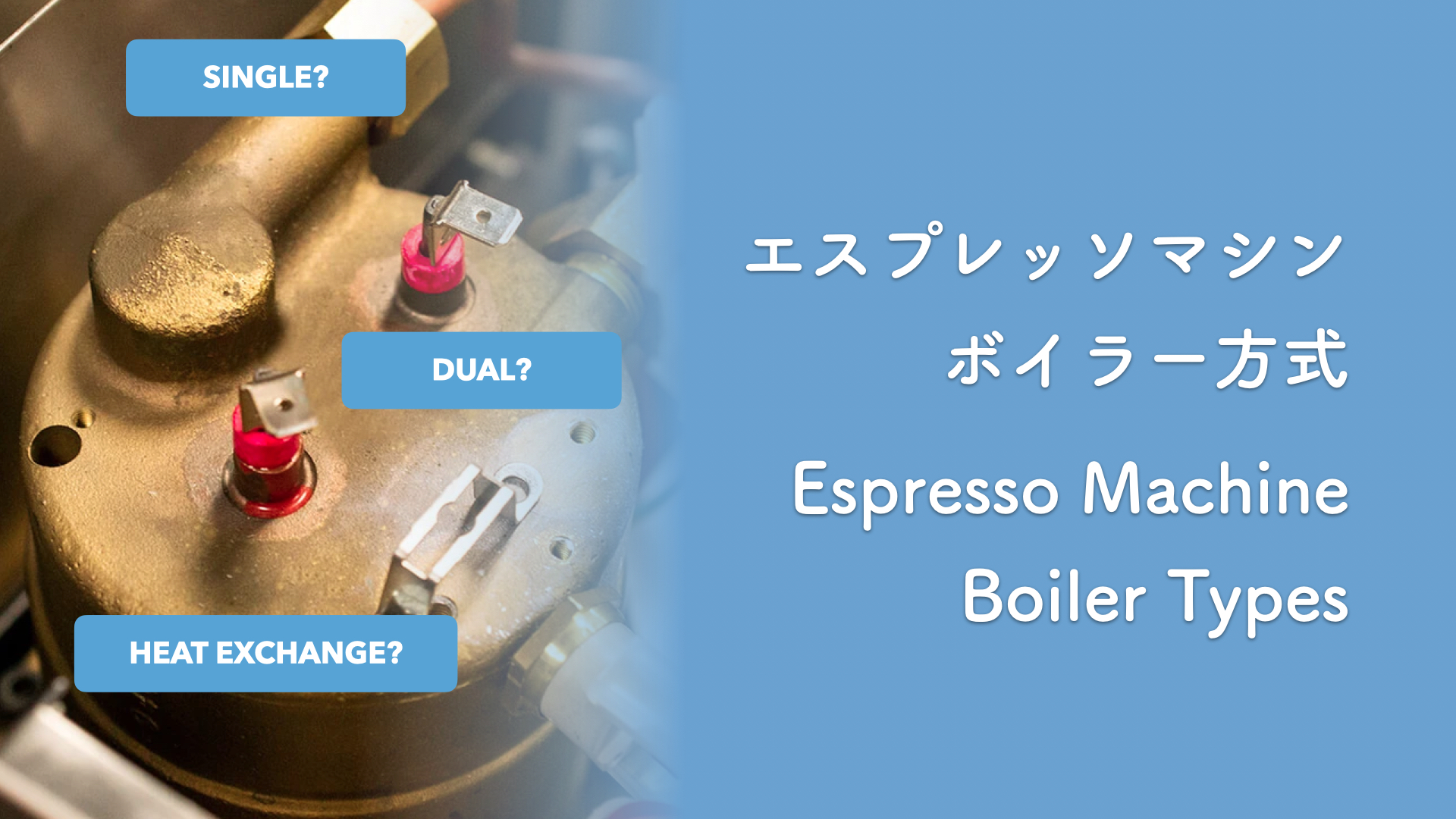Hi everyone!
Recently my urge to buy an espresso machine has been rising by the day. So I’ve been gathering information about them. Today I would like to share some information with you about the types of espresso machines, from the point of view of someone looking for their first espresso machine.
Espresso machines can be categorized in different ways and marketing names for the machines are not always consistent. I believe grouping them like the following is best for explaining their differences.
- Manual Machines : the user does the work
- Semi-/Fully-Automatic Machines : the user uses the machine
- Super-Automatic : the machine brews by itself
Now, you may already be confused. Most of them are “automatic”. What are the differences? Let me explain them, and the benefits of each.
Manual Machines : the user does the work
Manual machines are the simplest in terms of their build and function. As the name suggests, manual machines require the user to put in the power to create the pressures necessary for espresso extraction.
A lever mechanism is typically used in manual machines, so they are sometimes referred to as lever machines.

In general, manual machines do not use any electrical parts. In this way they are much simpler than the other types of machines. For this reason, they tend to be relatively cheeper. Also their size can be compact, and some products like the Flair in the picture are even intended to be carried around.
A typical workflow of a manual machine is as follows. You grind your coffee beans, put them in the basket, level and tamp the puck. Add boiling water you prepared on a separate kettle, then finally press on the lever to drive the water through the puck at high pressure.
The user has to do all the work, so it requires the most amount of work. However this in turn means that the user has a lot of control over every part of the brewing process. This is a big benefit of these machines.
The change in pressure on the puck of coffee during the roughly 30seconds of brewing is called the pressure profile. Most of the automatic machines, which I will talk about later, will not let you control this pressure profile, what the machine gives you is what you get. But with manual machines, the force that the user presses on the lever is directly the pressure applied, giving the user full control of the pressure profile. This is a feature that only the very high-end automatic machines provide.
The simple and low cost nature, and the amount of control manual machines provide is the reason they can be a good choice for beginners to experienced baristas.
There are obviously some down sides. The main one being the extra work they require. Pressing the lever is one, but manual machines also tend to require preheating the brew chambers, and clean up tends to be fussier. And for this reason, manual machines are not the best at pulling back-to-back shots in a short amount of time.
Another key draw back is that they do not have any mechanism to provide steam for steaming milk. If you are absolutely focus on only espresso, this may not be an issue. But if you want to make some milk drinks, this might be a deal breaker.
There are ways to steam milk with out using a steam wand. You can use french presses to sort of get something similar. Or there are machines like the NanoFoamer which are dedicated to creating steamed milk. So it is possible to make milk drinks with a combination of a manual machine and these alternative milk steaming tools. But there is a question mark on the ease and quality of milk they produce.
Semi-/Fully-Automatic Machines : the user uses the machine
The next group of espresso machines is the Semi-Automatic and Fully-Automatic machines. They tend to be differentiated in marketing names but their workflow from the user perspective is quite similar. They are some times called simply automatic-machines. The naming for theses are quite inconsistent. But if you understand their function, it will be easy to tell them apart.

Gaggia Classic Pro
Source:Gaggia
Semi-Automatic machines have a boiler to heat the water used for extraction and steaming. Also they have a pump to provide the pressures necessary for the brewing process. The user is responsible of grinding the beans and preparing the puck as in manual machines, but after that the machine will take care of the rest.
In this way, semi-/fully-automatic machines act as one tool that the user uses to brew espresso. It handles a lot of the heavy lifting, like heating the water and steam and providing the pressures necessary, but the machine does not brew for you.
The distinction between semi- and fully- automatic machines is in the way that the extraction process is terminated. For semi-automatic machines, the user presses a button to start AND stop the brew. For fully-automatic machines, the user presses a button to start, but the machine automatically stops the brew based on either a timer or the amount of water pushed through.
Most of the commercial grade espresso machines fall in this group. If you are serious about brewing espresso and want to get cafe grade espressos, you should be looking for domestic machines in this category.

The benefit of these machines is the balance of convenience and control you get.
A lot of the parameters you would like to control for the brewing process, like grind size, tamp method are controlled by the user. Other parameters like temperature and pressure are controlled by the machine. The more expensive the machine, the more it tends to let you adjust these parameters.
As mentioned, manual machines give you the potential to control every part of your process. This is true, but it does not mean that you can or will control these the way you want every time. Semi-/fully-automatic machines provide a very easy and repeatable control of these parameters, at the slight expense of flexibility.
And as a key benefit over manual machines, semi-/fully-automatic machines come with a steam wand with which you can steam your milk.
The cost of semi-/fully-automatic machines vary widely depending on the build, boiler design, the ability to control temperature / pressure, number of group heads, etc… So it may be quite difficult to decide which one best fits you.
A down side to these machines is their size. Compared to manual machines they are much larger and complex. They take up a significant amount of space on your counter top. Also these depends on the machine, but some take a significant amount of time to heat up after switching them on. Some machines include a start up timer as a solution to this, but it may be an annoying point when you suddenly want an espresso.
Super-Automatic : the machine brews by itself
The final group is super-automatic machines. They are machines which pretty much do everything for you.

Source:Gaggia
The only thing the user has to do would be to put some beans, water, milk into the machine, and hit a button. The machine will grind, heat, steam and make a cup of latte on its own.
The clear benefit of these types of machines is the convenience. The user does not have to do anything, which means that it requires no skill from the user. This is why they are typically found in self-service bars, for instance at hotel breakfasts.
If your desire is to get a good cup of coffee with the minimum amount of effort this is the machine for you.
As a flip-side, you loose pretty much all control over the brewing process. This may be an over simplification, but the quality of drinks you will get form these machines compared to a cup from a skilled barista with a manual or semi-/fully-automatic machine will not be as good. It will very easily and consistently get you a good cup, but it will never be a great cup.
This depends on what you are looking for, but if you are like me, who wants to make espresso brewing a hobby, a super-automatic machine will take all the fun out of brewing. So it’s definitely not the right choice.
Finally, super-automatic machines usually are very big, and cost the most.
Summary
Hopefully you learned something about the 3 groups of espresso machines.
- Manual Machines : the user does the work
- Semi-/Fully-Automatic Machines : the user uses the machine
- Super-Automatic : the machine brews by itself
The manual and semi-/fully-automatic machines are the ones you should be looking for if you want to put some effort in and make the best espresso possible as a hobby. Super-automatic machines are for a very different audience.




コメント